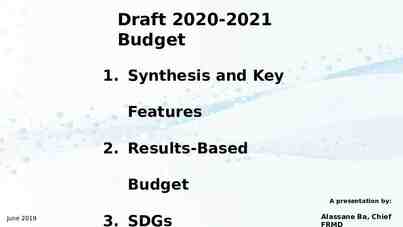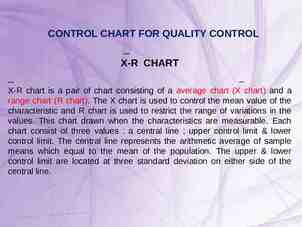Promoting Self-Determination for Students with Disabilities
31 Slides2.78 MB

Promoting Self-Determination for Students with Disabilities Joseph Madaus, Ph.D. University of Connecticut Lyman Dukes III, Ph.D. University of South Florida Presentation at the Beacon College Symposium on Learning Disabilities 1

First . CONGRATULATIONS ON 30 YEARS!!! 2

About Us Joe – University of Connecticut Neag School of Education Associate Dean for Academic Affairs Professor of Special Education, Neag School of Education Director, Center on Postsecondary Ed and Disability Lyman – University of South Florida Professor of Special Education, College of Education

You May Wonder How can we support students’growth in self-determination? With all the other responsibilities we have, how do we incorporate strategies to support the development / practice of student self-determination? Are there tools that can facilitate the effort?

Is Self-Determination Actually Important?

6

http://just-lol.blogspot.com/2008/08/confusing-road-signs.html 7

Overview of Today’s Session Discuss the importance of self-determination Present and allow you to work with a tool to promote student self-determination – The Activities, Programs, and Policy (APP) Tool

Some Background According to the National Center for Educational Statistics (2018, May), 19.4% of all undergraduates report having one or more disabilities. However, the National Longitudinal Transition Study-2 (2011) reported that only 28% of students with disabilities (SWD) disclosed their disability to their college. Thus, the number of SWDs on college campuses is likely to be much larger. SWD have a range of majors (NCES, 2018) and use a range of supports and services on campus. 66% of students with disabilities do not persist to graduation (Newman et al., 2011).

Questions High School Higher Education Infants through high school graduates (or through age 21) All student meeting eligibility criteria for admission with documented disabilities ADA & Disability Section ADA & Section 504 TransitionIDEA, and Law 504 What are the applicable laws? Who is covered by the law? Who has the School responsibility for identifying and evaluating students with disabilities? Individual student What is offered to a Special Education, Reasonable student with a disability? Accommodations, accommodations individualized education plans (IEP’s) Who serves as the primary advocate? Parents Individual student Who is responsible for monitoring progress, outcomes and achievement? School Student Adapted from Think College (2012)

Self-Determination Self-determination theory (SDT) has been used in studies of college students Higher levels of SD predicts higher levels of student engagement (Faye & Sharpe, 2008; Guiffrida, Lynch, Wall, & Abel, 2013; Ryan & Deci, 2000; Scholl & Schmitt, 20011). But research on SWD tends to use definitions from K-12 special education. The Office of Special Education and Rehabilitation Services funded a series of demonstration projects on SD in the 1990’s. A variety of SD definitions and components emerged. Definitions and research generalized to college SWD.

Self-Determination Field et al. definition is commonly used: – Self-determination is a combination of skills, knowledge, and beliefs that enable a person to engage in goal-directed, self-regulated, autonomous behavior. An understanding of one’s strengths and limitations together with a belief in oneself as capable and effective are essential. When acting on the basis of these skills and attitudes, individuals have greater ability to take control of their lives and assume the role of successful adults. (Field, Martin, Miller, Ward, & Wehmeyer, 1998, p. 2)

Components of Self-Determination 1. 2. 3. 4. 5. 6. Choice-making Skills Decision-making skills Problem-solving skills Goal-setting & attainment skills Independence, risk-taking, and safety skills Self-observation, evaluation, & reinforcement skills 7. Self-instruction skills 8. Self-advocacy & leadership skills 9. Positive attributions of efficacy & outcomes 10.Self-awareness (Wehmeyer, 2007) 11.Self-knowledge

A Review of the Literature A systematic review of the literature on SD and SWD was conducted by: – 1. Gathering articles from a systematic review of the literature (Madaus, et al., 2018) that were related to selfdetermination. – 2. Conducting an updated Boolean search with the original search terms and a number of additional terms including: choice making decision making problem solving goal setting and so on – 3. Completing a hand search of existing articles on selfdetermination and college students with disabilities. 100 articles met inclusion criteria after 3 stages of review

The PASS Taxonomy Program and InstitutionalFocused Support StudentFocused Support Faculty and StaffFocused Support Student Success Concept and Systems Development

Literature on SWD and SD: n 100 Studies Self-awareness 4% Selfmanagement/ regulation 8% Self-knowledge 3% Self-efficacy 13% Self-esteem Other 3% 4% Self-advocacy 36% Self-disclosure Self3% determination 26%

Years That Studies Were Published 35 30 25 20 15 10 5 0 19831988 198919951994 2000 Not data-based 200120072006 2012 Data-based 20132015

Types of Methodologies Used Single subject 6% Qualitative 48% Descriptivequantitative 33% Group 5% Mixed methods 9%

Sample Sizes 21% “1-10” 24% 15% 40%

Self-Determination - What We Know Students appear to have issues with selfregulation, self-efficacy There is a clear need for strong secondary preparation in all aspects of self-determination (e.g., self-regulation, self-advocacy, communication) The literature points to the fact that self-advocacy skills can be taught

Self-Determination – What We Know This development should start in high school (or earlier) and can, and should continue in college It is important for students to accept their disability, to learn to deal with disability identity, possible stigma It is important for students to become academically and socially involved It is important for students to seek out, develop, and foster support – Family, friends, advisors, faculty Can the APP tool assist in this?

The APP (Activities, Programs, Policies) Tool In your experience and view: – What are 5-7 common challenges exhibited by college freshmen? – What are additional challenges specific to: First Gen, SWD, Low SES Other groups of students

The APP (Activities, Programs, Policies) Tool List 5-10 of the most popular/favorite or effective APPs at your campus If helpful (but not necessary), you can align an APP with an identified challenge

The APP (Activities, Programs, Policies) Tool Code the APPs based on the list of Self-Determination Components (SDC) at the bottom of the page Circle any SDCs that you did not use or would like to use more Reflect on the the APPs in the white boxes; are there ways SDC’s could be better incorporated? Do any of the activities hinder the development of SDCs? If so, what can you do about that moving forward?

Piloting the APP Tool Four focus groups around the country Mix of student affairs, disability services Results: – “What I found as helpful is you can look at which outcomes we may not be hitting. Like identifying the gaps in outcomes It’s more like you're evaluating what outcomes you might be missing.” – One participant noted historically self-determination skills have not been considered during APP planning and development, however, “ it’s a nice way to look at what we’re currently doing and maybe how to improve them to increase more of these skillsets.”

Piloting the APP Tool: Recommendations Use for ongoing assessment Use as a pre- and post measure to evaluate programs and department progress in infusing SD into activities – Oh, we need to continue to do this. Let’s just do it because we’ve done it for such a long time,’ and being able to kind of hold a mirror up to that program and say, ‘Okay. Well, is this aligning with what we’re hoping to get?’ I just see it as another layer of accountability when thinking about planning things, when thinking about planning for a year, or thinking about planning a program calendar or an activities calendar of what things are actually (working).

Piloting the APP Tool: Recommendations Use for ongoing assessment: – We have a professional development day coming up which is going to encompass all of student services, and this seems to me like it would be a great model for that kind of a training to talk about these aspects. I also think that use with faculty or staff would allow you to develop an institutional perspective on how you better build in strategies that help students become more self-sufficient and who are able to advocate for themselves.

Questions for You What Activities, Programs, and Policies did you identify that could be used to foster student self-determination? What Activities, Programs, and Policies did you identify that could be possibly hinder student self-determination? How could the APP tool help you in working to foster student selfdetermination? How could the APP tool be used at various levels of your work (e.g., institutionally, area specific, program specific)? Could it be used by non-disability service programs/services? How?

College-Bound: Recommendations for Parents Employ supports in high school that are necessary Support the development of skills including: – Problem-Solving – Decision-Making – Organizational Skills – Time Management – Advocacy Visit colleges together Examine / Evaluate college websites Evaluate college and community resources together

Questions for Us?

Thank you! Joe Madaus, PhD [email protected] Lyman Dukes, III [email protected]






